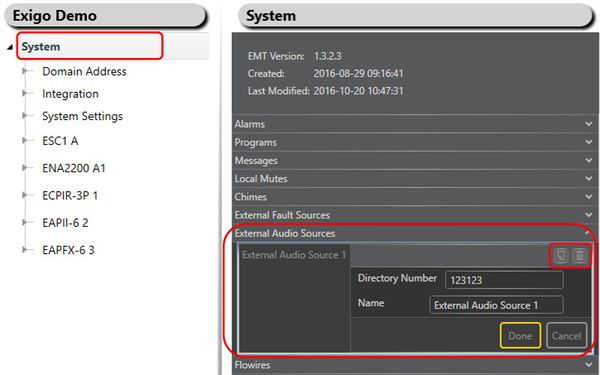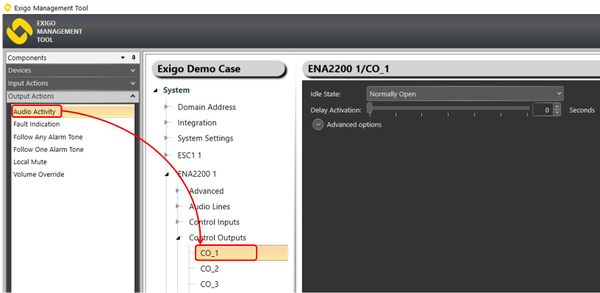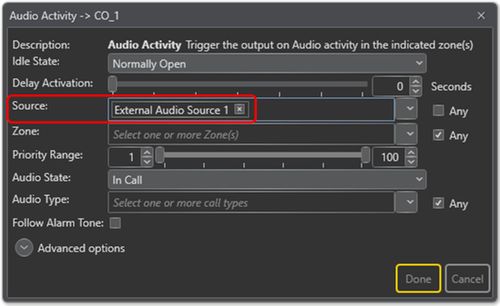Difference between revisions of "External Audio Sources"
(→Example - Mute IP Speaker based on specified SIP Station) |
|||
| Line 32: | Line 32: | ||
* First you need to create an SIP integration. <br> | * First you need to create an SIP integration. <br> | ||
* Create an External Audio Source with the Directory Number on the station that is going to trig the mute. | * Create an External Audio Source with the Directory Number on the station that is going to trig the mute. | ||
| − | + | Go to '''System''' -> '''IP Speaker''' -> '''Amplifier as independent output'''. | |
| − | + | Drag '''[Audio Activity]''' | |
| − | |||
== Availability == | == Availability == | ||
Revision as of 09:22, 26 September 2018
This article describes how to use the External Audio Sources feature.
External Audio Sources is used to make a control output trigger on an specified external audio source. External audio sources can be a station in an AlphaCom system or a station in a SIP system which is integrated into Exigo.
Configuration
To define the external audio source:
- In Configuration view, open System
- Click External Audio Sources to expand it
- Press the Add button
- Type in Directory Number and a name in the Name field
The Directory Number is the number for the station that is initiating the call.
To use External Audio Source as the trigger for a control output:
- In Components view open Output Actions
- In System, identify the device and expand to Control Outputs
- Drag Audio Activity to the Control Output
Select the External Audio Source as the Source:
Example - Mute IP Speaker based on specified SIP Station
It is possible to mute an IP Speaker based on a specified SIP Station doing announcement in Exigo.
- First you need to create an SIP integration.
- Create an External Audio Source with the Directory Number on the station that is going to trig the mute.
Go to System -> IP Speaker -> Amplifier as independent output. Drag [Audio Activity]
Availability
This function is available from Exigo 1.3 and newer.


